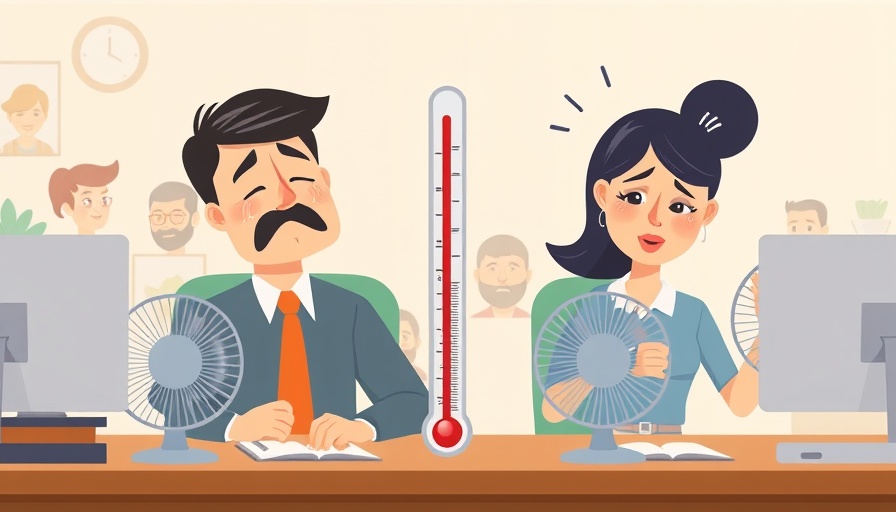
Understanding the Impact of Heat on Team Dynamics
The temperature of our environment plays a crucial role in our productivity and ability to work together effectively. Recent studies have shed light on how even slight increases in heat can affect teamwork, particularly in mixed-gender groups or those with different levels of experience.
How Environment Affects Focus and Cooperation
Imagine trying to concentrate in a sweaty, uncomfortable room; that’s precisely the situation many face during hot summer months. The rising heat can lead to irritability and hinder communication amongst team members. A newly published research study highlights that this isn’t just a minor inconvenience—it significantly impacts our cooperation and effectiveness as a team.
The Experimental Findings: What Does the Research Say?
The study involved students tasked with working together on coding software, where one was the “driver” typing and the other was the “navigator.” In cooler environments, teams thrived, showing impressive productivity that surpassed individual efforts. However, as temperatures rose, the teamwork suffered drastically; they completed about half as many tasks as they did in cooler conditions. The detrimental effects were particularly notable in mixed-gender teams and those with diverse academic experiences.
Implications for Workplaces in Warmer Regions
This research has broader implications, especially for countries experiencing both rising temperatures and increasing knowledge work populations, such as India and Bangladesh. As global warming trends continue, managers may need to reevaluate how they structure collaboration in such environments. Implementing technological solutions like air conditioning can help, but rethinking engagement strategies will be equally essential.
Rethinking Team Collaboration in Hot Weather
To counteract the heat’s impact on collaboration, organizations might have to adjust their incentive systems. Encouraging individual tasks during peak heat hours could mitigate issues that stem from increased temperatures, allowing individuals to work effectively, even under less-than-ideal conditions.
Creating Better Work Environments
Adapting workspaces to enhance comfort is vital for productivity. Besides air conditioning, investing in humidity control and promoting flexibility in working times can lead to improved outcomes. For instance, scheduling important discussions in the coolest parts of the day ensures that teams operate at their best.
Conclusion: Taking Action for Better Teamwork
Understanding how heat impacts teamwork can empower both managers and employees to make proactive adjustments in their work environments. From modifying physical spaces to altering collaboration strategies, acknowledging these environmental factors is key. As teams grow in diversity and complexity, adapting to our changing climates will enhance our ability to work harmoniously together.
Consider how you can influence your workspace. Whether advocating for better cooling systems or suggesting flexible schedules, taking action will foster an environment where everyone can thrive.
 Add Row
Add Row  Add
Add 




Write A Comment